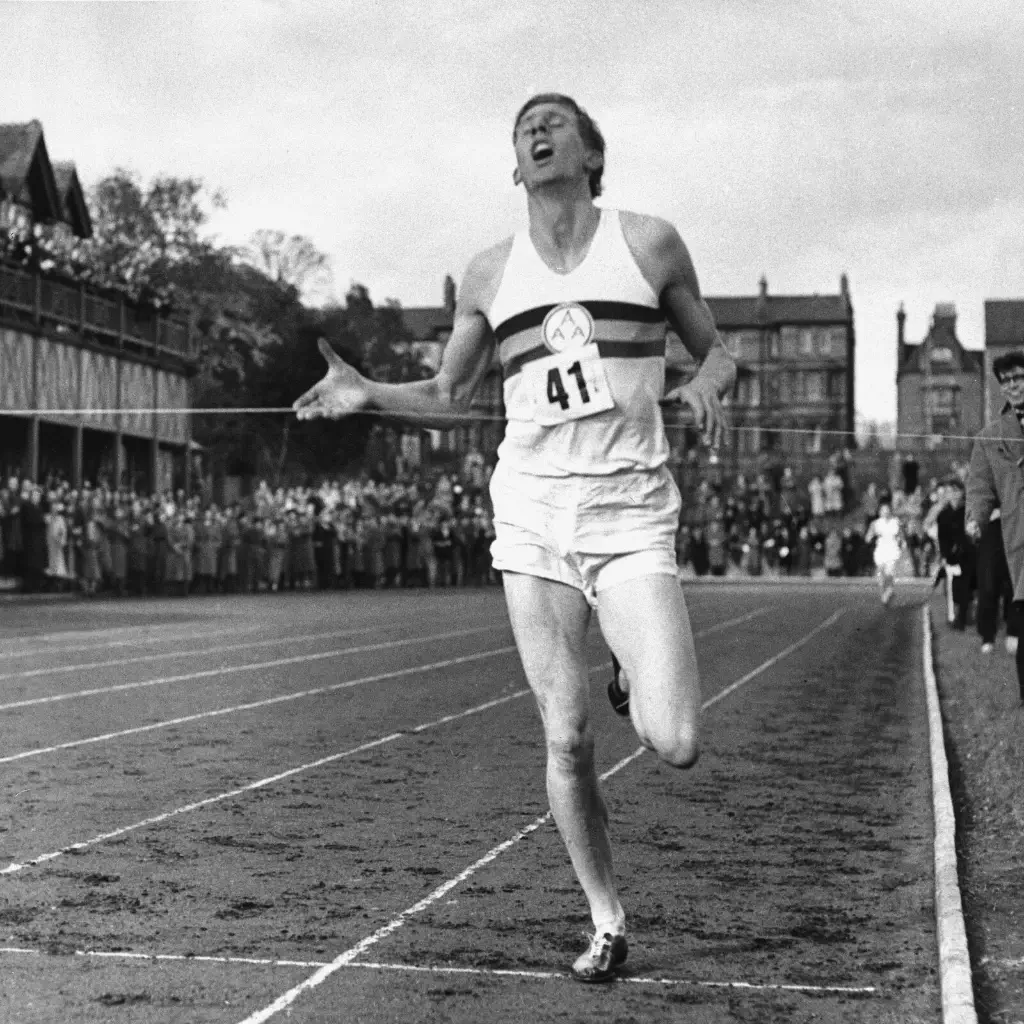Seventy years ago, Sir Roger Bannister achieved what was once considered impossible: breaking the four-minute barrier for the mile run. On a windy day at Oxford’s Iffley Road Track in 1954, Bannister completed the mile in 3 minutes 59.4 seconds. He etched his name into history as a runner and a symbol of human potential and perseverance.
The Historical Context of Sir Roger Bannister’s 4-minute Mile
Before Bannister’s achievement, the four-minute mile was more than just a physical barrier; it was a psychological labyrinth. Medical experts and seasoned athletes alike believed it was beyond human capability. The prevailing medical opinion suggested that such a feat could be fatal. This backdrop of doubt and fear makes Bannister’s accomplishment a record-setting moment and a milestone of human endurance and spirit.
The Man Behind the Mile
Bannister’s journey to that historical moment was far from typical. Unlike many of his contemporaries, he was not a full-time athlete. He was a medical student, later becoming a distinguished neurologist. Balancing rigorous studies and athletic training, Bannister’s approach to running was characterized by intense, short training sessions—uncommon at the time.
His preparation was meticulously planned with the help of his coach, Franz Stampfl, and pacemakers Chris Brasher and Chris Chataway, who played crucial roles in his record attempt. The strategy was simple yet ambitious, pushing him to his physical limits while carefully managing his pace throughout the race.
The Legacy and Influence
The impact of Bannister’s run extended far beyond the record books. It was a testament to human will and the power of belief. His feat came when the world rapidly changed, echoing other “barrier-breaking” achievements of the era, such as the sound barrier by Chuck Yeager and the ascent of Everest by Edmund Hillary and Tenzing Norgay.
Sir Roger Bannister’s story did not end at Iffley Road. Although he retired from competitive athletics soon after achieving the four-minute mile, his life in medicine and academia was equally impactful. He viewed sports as a microcosm of life’s more significant challenges, a perspective he carried into his professional and personal dealings.
Modern Reflections
Today, as we commemorate the 70th anniversary of Bannister’s run, the athletics world continues to evolve dramatically. It’s influenced by technological advancements and shifts in public interest. Critics argue that modern enhancements, such as high-tech footwear, have altered the landscape of track records. It sparks debates about the integrity of these modern achievements compared to those of the past.
However, just as Bannister’s lightweight spikes represented the cutting-edge technology of his day, today’s innovations are part of the sport’s natural evolution. As Bannister himself might agree, the essence of athletics is to push the boundaries of what is possible.
Conclusion
Sir Roger Bannister’s legacy is not confined to his four laps on a windy spring evening in 1954. It is carried in the spirit of every athlete who dares to break barriers, every innovator who pushes the limits of technology, and everyone who believes that the impossible can be made possible.
As we reflect on his contributions to athletics and beyond, we recognize that Sir Roger Bannister gave us more than a record; he gave us an enduring narrative of courage and infinite possibility.
FAQs
What made Sir Roger Bannister's four-minute mile so significant?
Sir Roger Bannister’s four-minute mile was significant because it broke a psychological barrier, proving that more was possible than what was believed achievable. It redefined the limits of human physical endurance and opened a new realm of possibilities in athletics.
How did Sir Roger Bannister train for his record-breaking run?
Sir Roger Bannister trained using a rigorous yet time-efficient method, balancing his medical studies with his athletic training. He focused on intense, targeted training sessions rather than long periods of running, which was innovative then.
What were some challenges Sir Roger Bannister faced?
Before breaking the four-minute mile, Sir Roger Bannister faced several challenges, including dealing with the physical demands of the effort under the belief that it could be fatal, training on less-than-ideal surfaces like cinder tracks, and balancing his athletic pursuits with a demanding medical career.
Did Sir Roger Bannister continue in athletics after breaking the four-minute mile?
After breaking the four-minute mile, Sir Roger Bannister retired from competitive running to focus on his medical career. He became a distinguished neurologist and remained involved in various aspects of sports and academia.
How is Sir Roger Bannister's achievement viewed today?
Today, Sir Roger Bannister’s achievement is viewed as a monumental sporting achievement and a beacon of human potential. It continues to inspire athletes and non-athletes alike, serving as a powerful reminder of the resilience and capabilities of the human spirit.





No comment